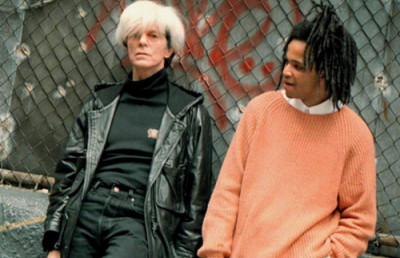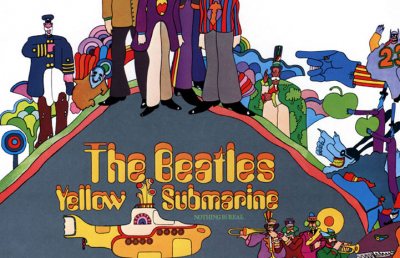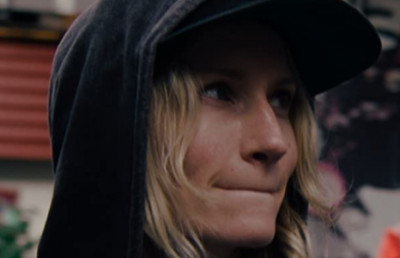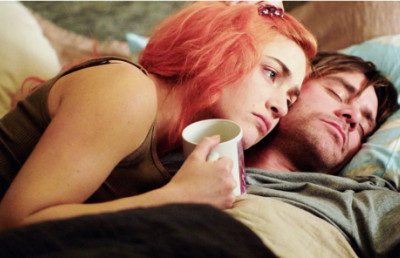Stars in Red and Gold: The American Myth Recuperated in American Vampire (2010)
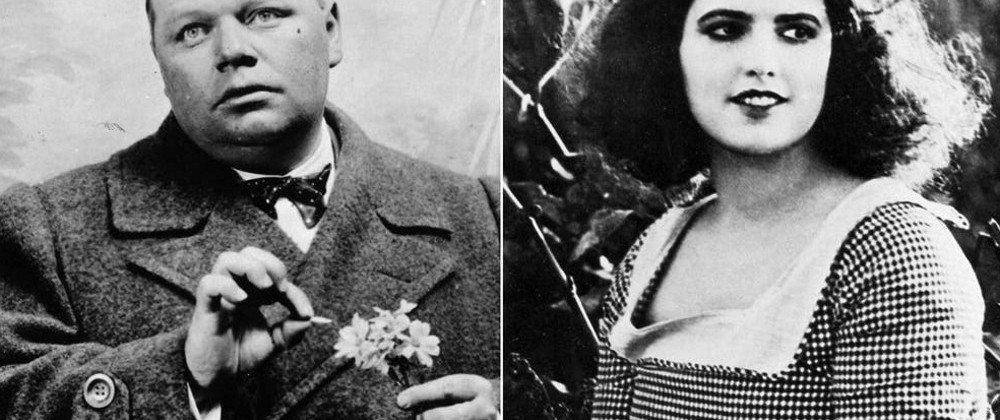
Pearl Jones, a young and beautiful girl from small town America, is trying to make her way in the new and blossoming film industry. She works as an extra, desperately trying to become the next Vitagraph girl. One day, Hollywood hunk Chase Hamilton invites her to an exclusive party at famed director B.D Bloch’s mansion. Starstruck, she is led to a private room where she is used up and left on the side of the road, reflecting on her shattered dreams. This story could very well be a feature in Photoplay magazine and, in many ways, is reminiscent of articles from this period that would warn of the lure of the movie business. Instead, this is the plot of American Vampire, Volume 1, a comic by Scott Snyder and Stephen King, which takes place in 1925 Hollywood. Stories such as “Hollywood,” by Frank Condon, featured in Photoplay in 1923, articulate the same narrative. Before a young country beauty queen leaves her small town, her father warns, “The motion picture is a fiery dragon, sinking its ruthless claws into the innocent young womanhood of American.” 1 Pearl Jones, the protagonist of the graphic novel, is literally sucked dry by a group of European vampires lead by B.D Bloch, and is then left in a ditch filled with bodies, all women, similarly used and tossed aside. She is saved by Skinner Sweet, a western outlaw who has become the first of a new breed of vampire, stronger and more resilient, whose only weakness is not sun or stakes through the heart, but gold. Jones sets out to take revenge on those who have exploited her and so many others like her.
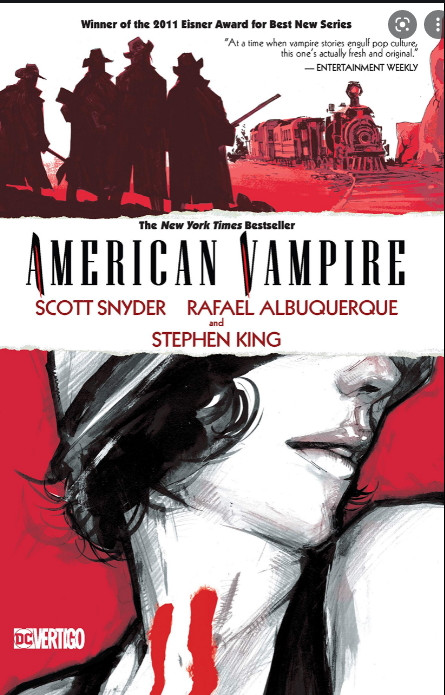
Written in 2012, this graphic novel reveals a great deal about the American myth, early Hollywood, and the lost history of women in early cinema. In Gunfighter Nation, Richard Slotkin notes how closely associated the frontier myth is with American culture and history. At the nucleus of this myth is the idea of conquering the great unknown and building a new world from nothing. Slotkin posits how violent conflict with that which is savage is closely wrapped up in this metaphor and essential to the frontier myth. This element of the myth stems from early conflicts with natives and the genocide of Native Americans. 2
Slotkin argues that ideology, genre, and myth are closely linked in the making of cultural identity. These factors are understood as ever present in society and “their meaning is expressed in the symbolic narratives of mythology and is transmitted to the society through various genres of mythic expression.” 3 Slotkin defines myths as a series of stories taken from history that encapsulate a society’s ideologies and dramatizes its moral awareness. Over time, these stories are retold to such an extent that they manifest themselves in many different forms. They are reduced to metaphors, conventionalized until they become loaded symbols, historical clichés, words, and icons. 4 Slotkin writes that “[t]he movement of a mythic narrative, like that of any story, implies a theory of cause-and–effect and therefore a theory of history . . . but these ideas are offered in a form that disarms critical analysis by its appeal to the structures and traditions of story-telling and the clichés of historical memory.” 5 Therefore, any myth that has been compressed to become icons, figures, and words is subject to the clichés of historical memory, which can often be whitewashing and historically inaccurate.
Slotkin goes on to suggest that a rupture can occur and a reworking or revision of a myth can take place as cultural values shift and change over time. When this evolution takes place, it blends old ideas with new concerns and values. 6 An example of this process occurs during the 1890s, when the traditional idea of the “frontier” comes to a close and begins to be replaced by a different kind of frontier that helped justify the U.S.’s political involvement abroad. 7 This period correlates with the rise of moving pictures, a new medium that would become central to the development of a retooled American myth.
Paula Marantz Cohen argues in Silent Film and the Triumph of the American Myth that the American myth was closely linked to silent cinema, giving “birth to a new kind of consciousness, centered on the dynamic image, which would have far-reaching effects on our future as a nation and on the shape of the world.” 8 She writes that this myth focuses on building a new world that is distinctly American, separate from its predecessors and all that is European. Hollywood, like the frontier, is synonymous with this American myth. 9
What are the repercussions for this whitewashing of history? In The Wounds of Nations, Linnie Blake writes that the answer can be found in Trauma Studies, which explains how traumatic events, such as war, genocide, and social marginalisation are ingrained in social, political, and cultural lives. 10 She argues that genre films enact what Freud terms Trauerarbeit, or mourning, by remembering the trauma and repeating the event through symbolic and metaphoric representation. She goes on to write:
By focusing on the site where ideologically dominant models of individual and group identity are sequentially formed, dismantled by trauma and finally re-formed in a post-traumatic context, such narratives can be seen to demand not only a willingness on behalf of audiences to work through the anxiety engendered by trauma, but a willingness also to undertake a fundamental questioning of those ideologically dominant models of individual, collective and national identity that can be seen to be deployed across post-traumatic cultures.” 11
In this way, Blake is suggesting that the horror genre is concerned with exposing that which is repressed by nations and helps to recuperate and rework cultural identities, questioning their ideological models and structures. Horror digs up histories of marginalised peoples in order to reveal through simulation and representation that which is lost through repression. 12
American Vampire is, among other things, a representation of the central role of women in Hollywood during the silent era, using both the horror and western genres to reveal the lost history of woman in early Hollywood. This buried history is similar to psychoanalytic trauma in that its repression often resurfaces and manifests itself in Hollywood culture. Robin Wood writes that horror is largely concerned with revealing the repressed, and American Vampire recounts the repressed history of socially marginalised woman and their role in the creation of Hollywood. 13 American Vampire helps reformulate the American myth by exposing that which is represented and therefore helping it heal.
As American Vampire opens, the narration box tells the story of Pearl Jones’ very first experience at the movies. She states she was a young girl and it was her birthday when she saw Méliès’ A Trip to the Moon (Le voyage dans la lune) (1902). She describes the film as “beautiful, funny and sad . . . it’s classic.” Her friend Hattie states that her first film was Romeo and Juliet (1908) with Florence Turner who, at that time, was not billed in advertising under her name, but rather was simply known as the “Vitagraph Girl.” While Pearl is telling the story of her first experience at the cinema, the images that accompany her narration is of a shrouded figure throwing a young naked women into a pile of decomposing bodies. The body is of Pearl and she weakly whispers, “Please . . . I’m alive.” The last frame on the page is of the moon. The first frame on the following page is of an obviously fake moon on the set of a production that Pearl is working on as an extra. The comic revolves around the lives of the female extras who work multiple jobs and try to make it big in Hollywood. These first few pages in American Vampire are both insightful and revealing. The comic hints at that which is left out of historical memory by the patriarchal system and subtly calls for the reworking of the narrative of Hollywood. What is omitted is the centrality and dominance of women in the formative years of Hollywood.
In Go West, Young Women! (2013), Hilary Hallett analyses the essential role women played in the early days of Hollywood. She reveals how, in the 1910s, Hollywood welcomed woman and was seen as an industrious city where they could start fresh and prosper under the beautiful Californian sun. By the 1920s, women outnumbered men, which was virtually unheard of in developing cities, and women over twenty five made up the majority of the work force. 14 Many of these women flocked to Hollywood with stars in their eyes, hoping to rise through the ranks and become a famous movie personality. For the majority of these women who migrated to Los Angeles, the boomtown offered economic independence and a new life. In American Vampire, the economic independence of women in Hollywood is subtly expressed when Jones threatens Skinner Sweet, the western outlaw vampire from the early 1800s. Jones threatens to call the sheriff on Sweet, saying, “she’ll run you out of town before you know what hit you.” Sweet responds, “She’ll run me out of town,” and laughs. Sweet then compliments Pearl on her liveliness. His disbelief, followed by a compliment of Pearl, reveals how extensively things have changed from the frontier days, and for the better.
Movies during this era were primarily marketed towards woman due to the fact that, following the transition from the period before 1906, when films were primarily shown in rented venues, carnivals and burlesque houses, there had been a boom in the establishment of cinemas, spaces which specialized in the presentation of motion pictures. These new cinemas eagerly courted the female audience, particularly middle class women, who had tended to stay from film screenings. Women not only offered the possibility of an expanded audience, but of granting respectability to the medium. For the most part, burlesque theatres were seen as low grade and housing debauchery. One of the first things industry heads did in the early 1900s was distance themselves from burlesque, attempting to make their medium seem respectable. 15 These new female spectators soon dominated film audiences. As Hallett notes, “by the early twenties, some estimated that women occupied 75 percent of seats.” 16 This fact shaped movie fan culture, directly addressing a female audience, while women were the primary stars of the era’s films. 17
Fan magazines held up the actresses Mary Pickford and Gloria Swanson, as well as the writers Frances Marion and Elinor Glyn, as successful independent women who had migrated to Hollywood and were economically and socially liberated. 18 Gossip writers such as Louella Parsons, who wrote about film in a nationally daily column, championed the “modern woman.” Hallett argues that Parsons “created new western myths that appealed to these fans’ desires, blending wish fulfillment and social reflection.” 19 Parsons described Hollywood as “a novel kind of western frontier that sought women adventurers.” 20 By combining the frontier myth with the early 1920s Hollywood zeitgeist, Parsons insightfully reveals a female frontier that strives for female independence. American Vampire reveals this lost history and exposes the quintessential elements of the American Myth that should be recuperated. This is demonstrated by the graphic novel primarily focusing on Pearl Jones and her friend Hattie. Though men are present within the graphic novel, women are its central characters.
After the Arbuckle/ Rappe scandal, there was a marked change in how the press represented Hollywood. The scandal concerned a sexual encounter between Virgina Rappe, a female extra, and Fatty Arbuckle, one of the era’s most popular comic stars, which culminated in the actress’s tragic death. The press exploited this scandal and her death would come to reveal a darker side to Hollywood. Diane McKenna writes the “warning stories” about coming to Hollywood were directed largely at “star struck girls” whose reality would never include Hollywood. 21 McKenna argues that “[t]hese warnings about the film industry existed in tension with a wealth of material that celebrated the growing film world.” 22 Though the warnings were there, they were easily dismissed by fans and were largely used to sell papers. This was similarly accompanied by the reassurance of the Hays Code, which enforced a morality clause in contracts explicitly condemning sexual exploitation, and the expansion of The Hollywood Studio Club, which helped house and support women who flocked to Hollywood. 23 These institutions helped to whitewash the scandals that were emerging from Hollywood and would help reassure the general public that the movies, and the people who made them, were morally wholesome. American Vampire, which takes place in 1925, a few years after the Arbuckle/Rappe scandal, clearly reveals the reality of an extra and the darker side of the American myth.
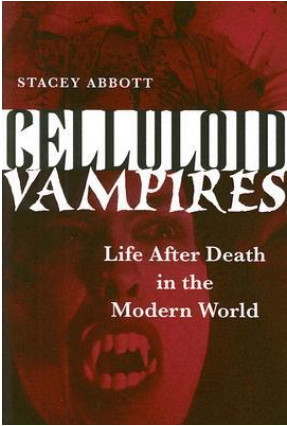
In Celluloid Vampires, Stacey Abbott explores how the figure of the vampire is closely aligned with cinema and, as such, representative of modernism. 24 Abbott’s thesis is relevant to American Vampire in that the figure of the vampire acts as a metaphor for the plight of the “extra girl” in the early Hollywood studio system. Seduced by the great American myth, these extras were often exploited both sexually and economically by the studios. The vampires within the graphic novel that drain Pearl Jones and leave her for dead are European vampires and big shots in the industry. Heidi Kenaga argues that the introduction of the Hays Code and the expansion of The Hollywood Studio Club allowed the studios to solidify a façade of moral fortitude. She writes that “within public discourse, studio heads could be reconstructed as less the impersonal managers of an exploitative factory system and more the benevolent patrons to young female movie hopefuls.” 25 This allowed for a whole slew of exploitative practices to go on under the radar.
The figure of the “extra girl” was commonly associated with the flocks of young women who were migrating to Hollywood. These women were film crazy fans with stars in their eyes, hoping to become famous. Anthony Slide notes that the life of an extra was far from easy, quoting an extra from the late 1920s who claimed that extras would encounter “poverty, pathos and perversity in this fabulous paradise of prosperity, plenty and prodigality.” 26 The extra girls could expect sexual harassment as part of the hiring process. One industry commentator stated that these women were, “movie moths – poor, fragile, lovely creatures drawn to this lamp of fortune, fluttering dizzily about it and so apt to be singed before they are through.” 27 “Moth” even became a term commonly given to extras who performed “special favours” to get work. 28 These practices were regarded as commonplace in the industry and some stated that Los Angeles women’s clubs would be quick to complain about these practices and just as quick adjourn their meetings without actually doing anything to resolve the problem. 29 Slide writes that even after the Arbuckle/Rappe scandal, it was plainly obvious that it was business as usual for executives who exploited extras. 30 While the Fatty Arbuckle case is widely known and ingrained in the larger narrative of early Hollywood, there are possibly hundreds of scandals that were swept under the rug in the wake of the Hays Code.
In Capital, Volume One, Karl Marx writes about the then newly industrialized workforce that the “prolongation of the working-day beyond the limits of the natural day, into the night, only acts as a palliative. It quenches only in a slight degree the vampire thirst for the living blood of labour.” 31 Marx’s use of the vampire as a metaphor for the industrial workplace is peculiarly apt when analyzing the American Vampire’s version of Hollywood. McKenna writes:
As the extra girl came to stand in for a largely anonymous workface, she became a star of a different order: abstracted from individual identity, she became a modern allegory for screen labour . . . To the industry’s advantage, the extra girl represented a sublimation of labour through her association with the discovery narrative that cast her in a passive role – she was waiting to be discovered – not working, and certainly not striking, to improve her life. 32
The extra was therefore subject to many forms of exploitation and was easy prey for those running the industrial studio system. An extra was likely to work without pay and was more often than not waiting around for hours to work. Extras were largely at the mercy of the director, who would often stall work until the following day. 33 What was important to the studios was to make sure that everything was perceived to be morally sound. In the wake of the Arbuckle/Rappe scandal, an extra could easily be dismissed due to morality clauses in their contracts if there was a chance they might generate bad publicity for the studios. 34
In American Vampire, once Pearl Jones is exploited and killed by the European vampires, Skinner Sweet, the notorious western outlaw, turns Jones into a new breed of blood sucker and sets her on the path of revenge. Pearl’s narrative is interrupted in each chapter by the story of how Sweet became the very first “American” vampire. His story, written by Stephen King, takes the form of a western serial and its narrator is a talking head (literally represented on the page as a head in the corner of the frame) that witnessed the gruesome story unfold. At one point in Pearl’s narrative, Sweet’s story is playing on the radio as a serial and the narrator of the tale is cited too. This inter-textual moment within American Vampire seems to be alluding to two distinct renditions of the frontier myth. The first is masculine and features the typical male outlaw icon (Skinner Sweet). The second is feminine and, empowered by the masculine frontier icon, Pearl becomes a “modern,” independent woman.
This, in many ways, reflects how westerns and cliffhanger serials helped to reveal to movie audiences a new, independent, and “masculine” woman. The serials of Pearl White, wildly popular between the years 1914-1919, had a great effect on the audiences that watched them. These action adventure tales demonstrated that women did not have to be damsels in distress, but rather could be cross-dressed adventurers running, fighting, riding, and winning the day. 35 Laura Horak argues that these films “offer an important counterpoint to film history’s dominant accounts of men racing to the rescue of confined women and the assumed unrepresentablitiy of same sex desire. They demonstrate the importance of female bodies to the construction of American masculinity and of masculinity to American womanhood.” 36 The serial within the text of American Vampire reinserts women into audience perceptions of the frontier myth. It similarly emphasizes the role that women played not only behind the screen, but also on screen in Hollywood.
The presence of the American vampire itself within the graphic novel is similarly a metaphor for the “modern” or “bohemian” extra girl that was afforded at least a measure of economic and sexual independence in early Hollywood. Once Pearl Jones realizes she has a unique power, she quickly comes to terms with the fact that she is a new kind of vampire. She is both empowered and even sexually enabled because of her distinctly American strain of vampire. Before Jones was turned into a vampire, the love interest of the story, Henry, attempted to woo her but to no avail. Only after Jones is turned into an American vampire does she actually engage with him sexually. Hallet demonstrates in her book that the extra girl was often seen as a bohemian in her approach to life, sex, and art. These women left their normative American lives to pursue the arts and live by their own rules and on their own terms. 37 A 1921 Photoplay article which explored the life of the extra girl and women in Hollywood concluded that “women can — and do — what they like,” for “they work, play, love, and draw their pay checks on exactly the same basis as men.” 38 This liberated image of the extra girl finds an echo in Pearl Jones after she has been turned into an American vampire. Jones is even more liberated than her enemies, the European bourgeois studio heads. When Skinner turns Jones, he leaves her a list of the likes and dislikes of the European vampire: “Likes: blood, moonlight and faggy clothes. Dislikes: sunlight (that’s the biggie), wood (pine especially), You.” The fact that one of the main advantages that Jones has over the European vampires is that she thrives in the sun can be taken as a representation of the liberated extra girl in sunny Hollywood, oppressed by a conservative bourgeoisie. Similarly, Jones represents the more bohemian extra girl in that she has a large tattoo on her neck. Throughout the comic she is taunted about the tattoo, largely seen as taboo at the time. However, as a true free spirit, Jones shrugs off the criticism. The reborn Pearl Jones, though exploited, seems to exemplify Hallet’s image of the bohemian extra girl, liberated and both sexually and economically independent.
Stephen King writes in his introduction to the comic that his and Snyder’s goal was to create a distinctly American vampire story: “Midnight America. Red, White and blue, accent on the red.” 39 American Vampire sinks its teeth so deep into the formative years of Hollywood that it drew America’s lifeblood, the frontier myth and its second coming in Hollywood. Through tropes associated with the horror genre, the graphic novel reveals the vital role that women played in the formative years in Hollywood not only as consumers, but as writers, and stars. By reflecting on the vampire as a metaphor for the exploitation of the extra, the darker narrative of the studio system in the formative years of Hollywood is recuperated. Lastly, through a reflection on genre and the figure of the American vampire, the empowered women in Hollywood and its connection to the frontier myth comes to light. Synder and King’s comic reveals the perils and potential of the Hollywood frontier in the 1920s and all that it had to offer women. Hallet summarizes the tragedy of the loss of this history when she states,
The era’s contentious sexual politics ensured that women’s prominent roles in creating and consuming this distinctive visual landscape would make them into some of the most arresting figures out west. Thus an origin story about how Hollywood became Hollywood that marginalizes women cannot hope to explain why its first “social imaginary” lit up imaginations around the world. 40
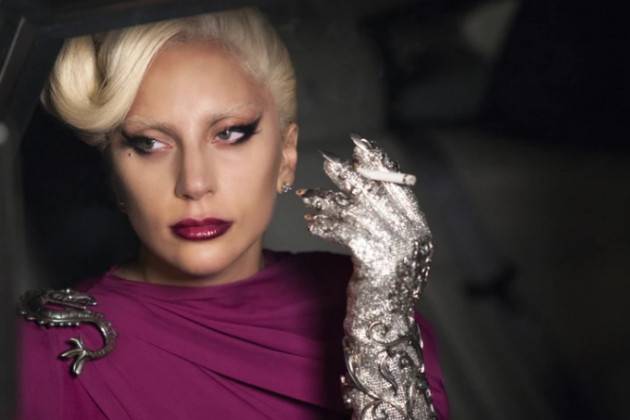
Lady Gaga in American Horror Story
American Vampire is not the first narrative to uncover the repressed history of Hollywood and it won’t be the last. American Horror Story’s fifth season, titled “Hotel” (2015), features a glamorous vampire figure, The Countess (Lady Gaga). It is revealed midseason that she was in fact a film extra in the 1920s and had an affair with Rudolph Valentino and Natacha Rambova, who turned her into a vampire. It seems that, through horror, the repressed history of women in the 1920s is resurfacing and helping to rework the American myth. Perhaps this is a result of the domestication of third wave feminism, which champions the sexual empowerment of women instead of victimization and marginalization. This is suggested in American Horror Story by having The Countess actively engage in a relationship with Valentino. Similarly, Pearl Jones does not allow herself to be a victim of the European vampires, but instead becomes empowered and fights back. The refusal of victimization and the empowerment of woman is gaining new force in popular culture. American Vampire is unique in its unearthing of a repressed history because it is merciless, brutal, and intelligent. Back from the dead, Pearl Jones rejects her marginalization of woman and thirsts for fresh blood.
This article was submitted in 2016 and has been lightly updated for dated entries, but does not of course reflect social or political changes that have taken place since.
Bibliography
Abbott, Stacey. Celluloid Vampires: Life after Death in the Modern World. Austin: University of Texas Press, 2007. Print.
Cohen, Paula Marantz. Silent Film and the Triumph of the American Myth. Oxford: Oxford UP, 2001.
deCordova, Richard. “The Star” from Picture Personalities. Urbana, Illinois: University of Illinois Press, 2001: 98-116.
Hallett, Hilary A. Go West, Young Women! The Rise of Early Hollywood. Berkeley: U of California, 2013.
Horak, Laura. “Landscape, Vitality, and Desire: Cross-Dressed Frontier Girls in Transitional American Cinema,” Cinema Journal 52: 74-98.
Kenaga, Heidi. “Making the ‘Studio Girl’: The Hollywood Studio Club and Industry Regulation of Female Labour.” Film History Vol. 18.No. 2 (2006): Pp. 129-139.
Marx, Karl, and Friedrich Engels. Capital; a Critique of Political Economy. New York: International.
McKenna, Denise. “The Photoplay or the Pickaxe: Extras, Gender, and Labour in Early Hollywood.” Film History Vol. 23,.No. 1 (2011): Pp. 5-19. Print.
Slide, Anthony. Hollywood Unknowns: A History of Extras, Bit Players, and Stand-ins. Jackson: U of Mississippi, 2012.
Snyder, Scott, and Stephen King. American Vampire. New York: Vertigo, 2010.
Wood, Robin. Hollywood from Vietnam to Reagan. New York: Columbia UP, 1986.
Notes
- Paula Marantz Cohen. Silent Film and the Triumph of the American Myth. Oxford: Oxford UP, 2001, 84. ↩
- Richard Slotkin. Gunfighter Nation: The Myth of the Frontier in the Twentieth-Century America. New York: Atheneum, 1992, 11. ↩
- Ibid, 5. ↩
- Ibid, 5-6. ↩
- Ibid, 6. ↩
- Ibid, 6. ↩
- Ibid, 3. ↩
- Cohen, 19. ↩
- Ibid, 19. ↩
- Linnie Blake. The Wounds of Nations: Horror Cinema, Historical Trauma and National Identity. Manchester: Manchester UP, 2008, 1. ↩
- Ibid, 2. ↩
- Ibid, 2. ↩
- Robin Wood. Hollywood from Vietnam to Reagan. New York: Columbia UP, 1986. ↩
- Hilary A Hallett. Go West, Young Women! The Rise of Early Hollywood. Berkeley: U of California, 2013, 14. ↩
- Richard deCordova. “The Star” from Picture Personalities. Urbana, Illinois: University of Illinois Press, 2001, 100. ↩
- Hallett, 14. ↩
- Ibid, 14. ↩
- Ibid, 99. ↩
- Ibid, 71. ↩
- Ibid, 72. ↩
- Denise McKenna. “The Photoplay or the Pickaxe: Extras, Gender, and Labour in Early Hollywood.” Film History Vol. 23, No. 1 (2011): 6. ↩
- Ibid, 6. ↩
- Hallett, 151. ↩
- Stacey Abbott. Celluloid Vampires: Life after Death in the Modern World. Austin: University of Texas Press, 2007. ↩
- Heidi Kenaga. “Making the ‘Studio Girl’: The Hollywood Studio Club and Industry Regulation of Female Labour.” Film History Vol. 18.No. 2 (2006): 131. ↩
- Anthony Slide. Hollywood Unknowns a History of Extras, Bit Players, and Stand-ins. Jackson: U of Mississippi, 2012, 6. ↩
- Ibid, 11. ↩
- Ibid, 11. ↩
- Ibid, 80. ↩
- Ibid, 89. ↩
- Karl Marx and Friedrich Engels. Capital; a Critique of Political Economy. New York: International, 175. ↩
- McKenna, 15-16. ↩
- Slide, 87. ↩
- Kenaga, 132. ↩
- Laura Horak. “Landscape, Vitality, and Desire: Cross-Dressed Frontier Girls in Transitional American Cinema,” Cinema Journal 52: 76. ↩
- Horak, 81. ↩
- Hallett, 151. ↩
- Hallett, 151. ↩
- Scott Snyder and Stephen King. American Vampire. New York: Vertigo, 2010. ↩
- Hallett, 9. ↩


